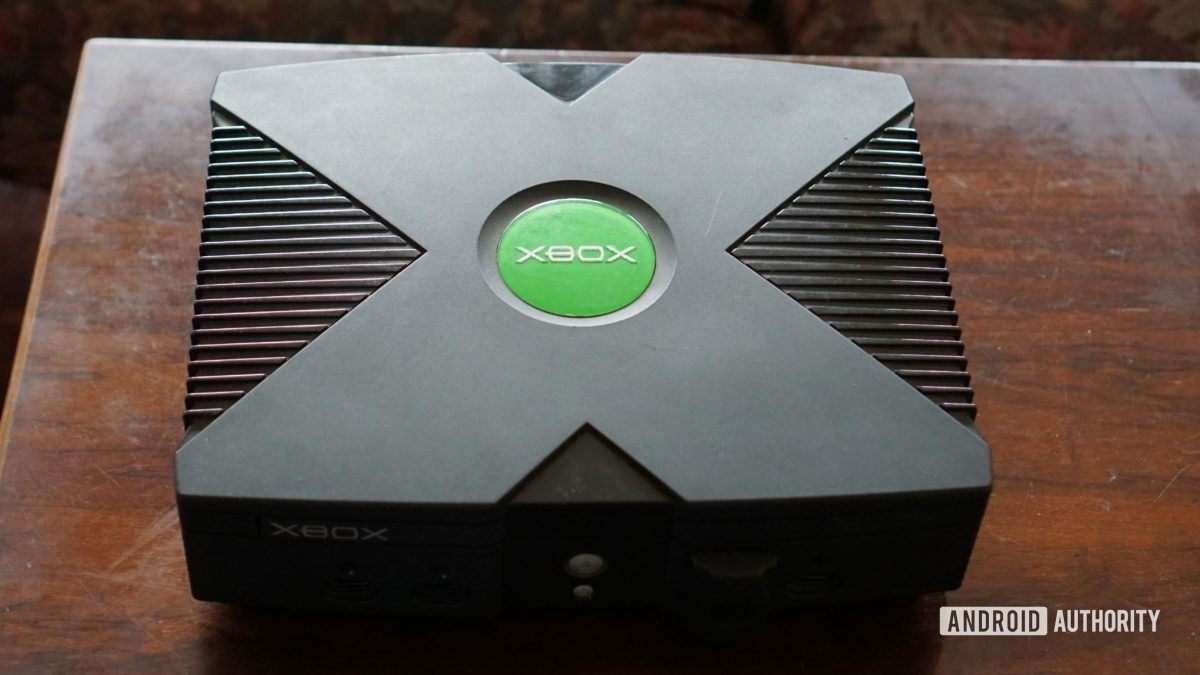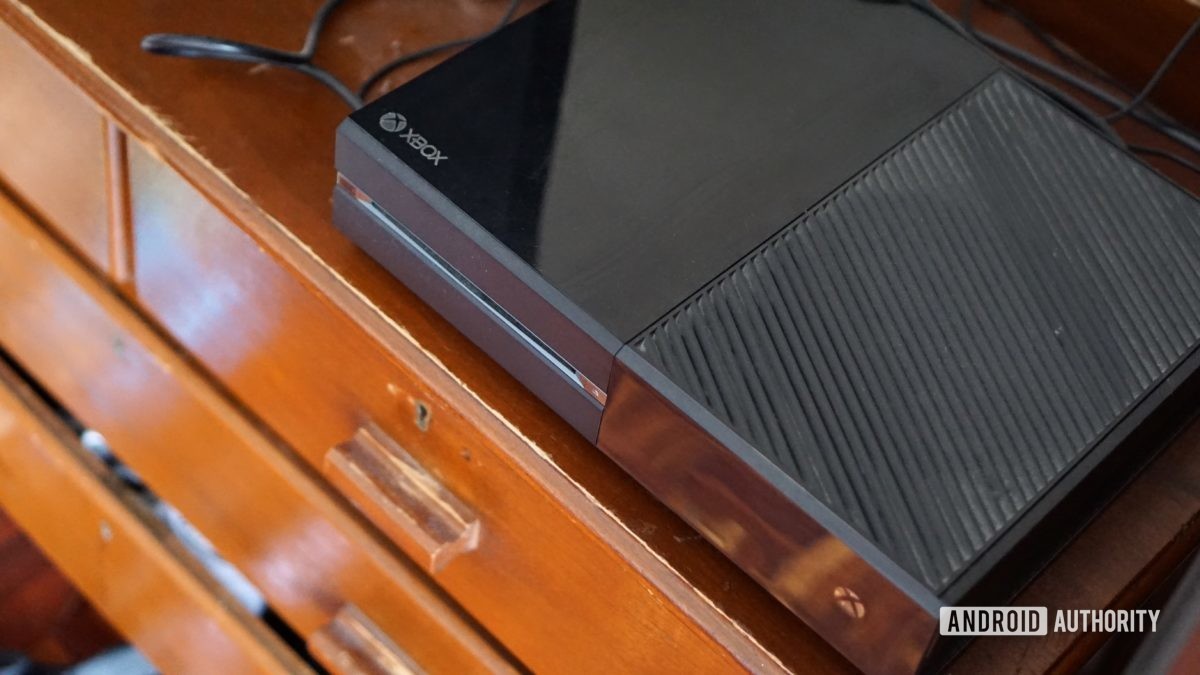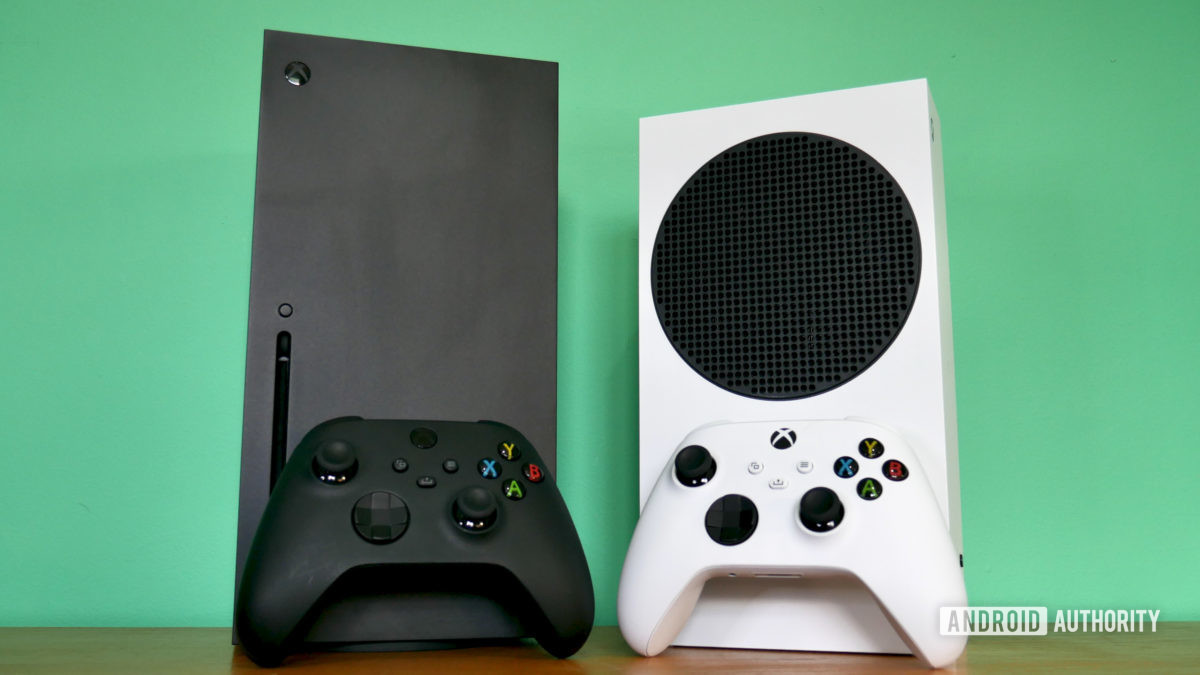Xbox history: From new kid on the block to household name

Microsoft’s Xbox consoles have been a fixture in the gaming industry for two decades now, spanning four console generations and establishing Microsoft as a major player in the segment alongside Sony and Nintendo.
Microsoft is still a relative newcomer to the console space compared to its rivals, but the Xbox consoles have brought their fair share of innovation to the industry and become another cash cow for the Redmond giant. So with that in mind, we thought now’s a good a time as any to look at the history of Xbox.
Microsoft Xbox: X marks the starting spot

The first Xbox launched back in November 2001, and in many ways established the template that most subsequent consoles would use. For starters, it was the first console with an integrated broadband modem.
Now, internet capabilities weren’t new at the time, as consoles like the Sega Dreamcast offered 56K modem support. But this was the first time it was integrated into the console (also offering more than just dial-up), and Microsoft would go on to launch its influential Xbox Live subscription service for online play in 2002. Fast-forward to 2021 and all three console makers offer paid services for online play.
The 8GB hard drive was another major addition at the time, which meant Xbox owners could store their game saves, patches, music, and more on the machine. This was in stark contrast to its rivals at the time, which offered memory cards as paid extras for game saves.
More Xbox coverage: Xbox Game Pass versus Game Pass Ultimate — Which is right for you?
The first console in Xbox history was a powerhouse too, featuring what was essentially a Pentium III processor, 64MB of RAM, and a GPU based on the Nvidia Geforce 3. This hardware combo resulted in multi-platform titles that often looked best on Microsoft’s console, as well as original titles and PC ports that looked the business too.
Perhaps the sole downside to the original console’s hardware was the controller that initially shipped with it in North America and Europe. Informally dubbed “The Duke,” this controller was considered oversized for many consumers. Microsoft later made the decision to swap out “The Duke” for the smaller Controller S that was made for Japan.
The original Xbox didn’t have the greatest library of its generation, but it did see console-exclusive titles like the Halo series, Jade Empire, Forza Motorsport, Ninja Gaiden, Steel Battalion, and the Project Gotham Racing series. It also saw PC ports like Knights of the Old Republic, Doom 3, Half Life 2, and The Elder Scrolls III Morrowind, as well as major support from Sega with games like Jet Set Radio Future and Shenmue 2. Microsoft also dipped its toes into the digital game download space with the Xbox Live Arcade service in 2004, offering a variety of bite-sized games to purchase or try out.
Microsoft’s OG Xbox was never a financial success for the company, as it lost plenty of cash on each console sold. This isn’t an uncommon practice in the industry at launch, as manufacturers are able to introduce models down the line that are cheaper to produce as components mature (in addition to other revenue streams such as accessories). Unfortunately for Microsoft, its use of essentially off-the-shelf PC parts limited the company in what it could do to cut costs.
Microsoft Xbox fast facts
- The “X” in “Xbox” is derived from Microsoft’s DirectX APIs for Windows, which handled things like multimedia, peripherals, and (of course) graphics.
- Microsoft originally showed off a console that was literally in the shape of an X.
- Prior to launching the Xbox, Microsoft was in talks with Nintendo about acquiring the Kyoto gaming giant. According to a book by veteran journalist Dean Takahashi, a figure of $25 billion was mooted and Microsoft wanted Nintendo to drop its upcoming GameCube and get behind the Xbox. The two parties reportedly went their separate ways by January 2000.
- There was a major push from some within Microsoft to launch the OG Xbox without a hard drive, according to an interview with former Xbox executive Ed Fries (skip to the eight-minute mark). The two camps reportedly met with Bill Gates to settle the argument back in 1999. Of course, the console eventually launched with the hard drive.
- The console still shipped with wired controllers, but Microsoft added so-called “breakaway” cables as a solution to people potentially tripping over the cable. As the name implies, the controller cable had a mechanism to easily disconnect itself instead of sending either the gamepad or console flying.
- The OG Xbox shipped with a DVD drive and used DVDs for game storage much like the PS2. Unlike the PS2 however, it couldn’t play DVDs out of the box. You had to buy a “DVD Playback Kit” to enable playback, consisting of a dongle and DVD remote.
- An easter egg for the original Xbox was revealed in 2021, 20 years after the console’s release. The easter egg shows a list of employees who worked on the Dashboard interface.
Xbox 360: Turn 360 degrees and walking to greatness

The second Xbox console was unarguably the most important console in Xbox history, as it needed to show Microsoft was here to stay and that the original console was no fluke. The Xbox 360 launched in November 2005, giving it a year’s head-start over Sony’s eagerly anticipated PlayStation 3.
Microsoft’s sophomore console was available in two configurations at launch, namely a $299 “Core” model without a hard drive and a $399 Pro/Premium version with a 20GB detachable hard drive. This was a far more attractive price-point for either version compared to the PS3’s $499 and $599 for the 20GB and 60GB models respectively. Then again, both Xbox 360 variants lacked HDMI and Wi-Fi at launch, with these features only coming later down the line.
The Xbox 360 delivered a triple-core six-thread 3.2GHz PowerPC CPU (dubbed Xenon), making it a major leap forward compared to the original Xbox. Other notable core specs include a powerful ATI Xenos GPU and 512MB of unified RAM. These specs and familiar tools made for a console that was considerably easier to program for compared to the more exotic PS3, resulting in many games running more smoothly on the Xbox 360 in the early going.
The console launched with a wireless controller (although wired versions were available too) and this gamepad earned plenty of positive reviews. Critics praised features like the guide/home button (now a standard fixture on console gamepads) and analog shoulder triggers.
Microsoft’s second console also stepped up in the online space, expanding on its Xbox Live Arcade titles while also offering full game downloads, movie/TV show rentals, streaming apps, and more. Otherwise, users still required a paid Xbox Live Gold subscription to play online.
The Xbox 360 was a great commercial success, but a hardware flaw killed millions of consoles.
The Xbox 360 played host to a variety of exclusive titles, including the Halo franchise, Gears of War series, Forza Motorsport games, Viva Pinata titles, and Fable 2 and 3. We also saw strong third-party support from the get-go, with a few third-party games even missing the PS3 due to its later launch. You didn’t have to give up all your original Xbox games either, as just under half the original machine’s library was compatible with the 360.
The company also released the Kinect motion camera in 2010, allowing you to use your entire body for games. That meant you could physically jump in the real world and have your avatar jump in a platform game, or dance in the real world to have your avatar dance in a title like Dance Central. It also offered a microphone for voice commands and allowed you to conduct gestures for various console functions. Kinect was commercially successful, but it didn’t see much in the way of killer apps.
Unfortunately for Microsoft and Xbox 360 owners alike, the console was plagued with so-called Red Ring of Death (RROD) hardware failures for the first couple of years on the market. It’s believed that the issue was related to a type of solder that becomes brittle at high temperatures or a chip design flaw. Nevertheless, a 2009 Square Trade survey found that the Xbox 360 failure rate stood at almost 24%, compared to 10% for the PS3 and 2.7% for the Wii.
Microsoft would end up setting aside just over $1 billion for repairs and other associated costs. It also offered a three-year extended warranty to cover RROD failures, which meant I wasn’t too bummed about going through two defective consoles before the third one worked fine. Subsequent console revisions would solve the issue though.
Speaking of console revisions, Microsoft released a few tweaked SKUs throughout the 360’s lifetime. We got the premium Xbox 360 Elite (featuring a 120GB hard drive and HDMI), the Xbox 360 Arcade to replace the original entry-level model (featuring a 256MB memory card and HDMI), the Xbox 360 Slim (boasting a slimmer design, 250GB hard drive, and Wi-Fi), and the Xbox 360 E (bringing an Xbox One-style design).
The Xbox 360 may have enjoyed first-mover advantage then, but PS3 price cuts combined with better (and more) exclusive titles down the line meant Sony’s console just edged out Microsoft’s machine at the end of the generation. Nevertheless, the Xbox 360 is still the most popular console in Xbox history.
Xbox 360 fast facts
- The early Xbox 360 development kit was literally just an Apple Mac G5 with an ATI graphics card, owing to the identical PowerPC CPU architecture.
- Microsoft also allowed you to swap out the Xbox 360’s face plates with one of your own choosing.
- The towel trick was one of the most popular home remedies for the RROD issue. Some consumers swore that wrapping a defective console in a towel and leaving the console on for 10 to 15 minutes would resurrect the machine.
- Microsoft also released an HD DVD drive add-on for the Xbox 360, serving as a competing format to Blu Ray discs for video content. In case you’re wondering, Blu Ray won that battle.
- The Xbox 360 also debuted the achievements system, allowing gamers to accrue points for in-game accomplishments (1,000 points in each retail game). This would then be reflected in a player’s gamer score. It would also result in a community of gamers sharing word of titles with the easiest achievements (hi, Avatar: The Last Airbender). Sony would later update the PS3 to offer its own achievements system, allowing you to earn virtual trophies instead of “achievements.”
- We covered it in our PlayStation history article, but a senior IBM engineer admitted that the Xbox 360’s Xenon CPU was actually a slightly modified version of the PS3’s Cell CPU. IBM, Toshiba, and Sony spent $400 million on the Cell project, so Sony in a way partially funded a competitor’s processor.
Xbox One: No, not the first Xbox

The Xbox 360 lost momentum to the PS3 in the second half of the generation, causing Sony’s console to eventually win that round of the console war (well, technically, the Wii won). Sony and its partner studios delivered plenty of exclusive titles while Microsoft and its affiliated studios sputtered. So surely Microsoft would learn from its mistakes and come out swinging with its next console?
Microsoft revealed the Xbox One in 2013, and the company’s strategy for the new gaming console was to neglect the gaming element in favor of pushing the machine for live TV, video streaming, and more. To this end, the console shipped with an HDMI-in, allowing users to plug their cable boxes, rival consoles, and more via the Xbox One.
The Redmond company also courted controversy over its initial plans for online connectivity and physical games. More specifically, the company noted before launch that the Xbox One would require an online check-in every 24 hours (even if you wanted to play offline games) and it would also introduce restrictions on the sharing and resale of physical copies. Microsoft would make a U-turn on both policies following a massive outcry from consumers, but not before Sony posted an offbeat video showing how PS4 game sharing would work.
Adding salt to the wound was Xbox bigwig Don Mattrick infamously stating that people who wanted to play their older games on Xbox One should just buy an Xbox 360 instead. It was the kind of arrogance that defined Sony during the early days of the PS3.
All of this combined to make the Xbox One a less attractive proposition for some gamers, with Microsoft touting 10 million units shipped a year after its release. Meanwhile, Sony had reported 10 million units sold nine months after its release. And the gap would only widen in the months and years that followed, to the point that Microsoft stopped releasing shipment/sales figures in 2015.
In any event, the Xbox One delivered a pretty respectable machine on paper, featuring the same octa-core AMD Jaguar CPU as the PS4, 8GB of RAM, a 500GB hard drive, AMD GCN graphics with 12 compute units, and a Blu Ray drive. Microsoft’s console did boast slightly higher CPU clock speeds, but the PS4 delivered 8GB of fast GDDR5 RAM and 18 compute units for the GCN GPU. This difference meant that we often saw multi-platform titles run at 1080p on the PS4 but at 900p on the Xbox One. It didn’t help that Microsoft initially devoted ~10% of the GPU power to Kinect regardless of whether you were using the peripheral. Thankfully, the company made a U-turn on this decision less than a year later.
Related: The best Xbox One games you can buy right now
Microsoft managed to earn plenty of goodwill following this troubled launch, as the company announced backward compatibility with some Xbox 360 games in 2015. This was no mean feat given the completely different architecture being used by the Xbox 360 compared to the Xbox One. We’d eventually see hundreds of backwards compatible Xbox 360 games on Xbox One, but there are still a variety of games that aren’t backwards compatible (e.g. Dirt, Max Payne 3, and the Project Gotham Racing games).
The company would go one better in 2017 by announcing that all original Xbox games that are compatible with the Xbox 360 would be compatible with the Xbox One. In other words, you could play all three generations of Xbox on one console. Even the PS4 didn’t offer backward compatibility with either the PS3 or PS2.
Microsoft would follow up the Xbox One with the Xbox One S and Xbox One X in 2016 and 2017 respectively. The Xbox One S essentially replaced the standard Xbox One, bringing a slightly higher GPU clock speed, HDR, and 4K video support (via streaming apps or 4K Blu Ray disc). Meanwhile, the Xbox One X sat above the Xbox One and Xbox One S in terms of power, delivering 12GB of RAM, a 2.3GHz octa-core Jaguar CPU, and a massively upgraded GPU (featuring 40 compute units) for true 4K gaming. Sony also released the beefy PS4 Pro at around this time, but Microsoft’s console had the performance edge, often hitting native 4K in multi-platform titles compared to “checkerboarded” (upscaled) 4K on the Pro.
The Redmond company would even use the Xbox One X’s power to make some older backwards compatible Xbox 360 and original Xbox games look and run better. For example, The Elder Scrolls IV: Oblivion and Ninja Gaiden Black gained 4K support.
What if you don’t want to play old games though? The Xbox One library paled in comparison to the PS4’s portfolio, but you got games like Forza Motorsport 5, 6 and 7, the Forza Horizon series, Gears of War 4 and Gears 5, Halo: The Master Chief Collection, Sunset Overdrive, and Sea of Thieves.
We also saw the Xbox Game Pass service debut in this generation, giving you a selection of games to play on your console or PC for a monthly subscription fee. And it’s since grown from strength to strength to become one of the best deals in gaming.
The Xbox One controller wasn’t all that different from the Xbox 360 at launch, save for ergonomic changes and the introduction of impulse triggers. The latter provided vibration in the triggers, such as when you drive over a rumble strip in a racing game. The gamepad would have a couple of revisions over time, such as a 2015 model that introduced a 3.5mm port, and the Xbox One S controller that switched to Bluetooth for wireless connectivity. The firm would also release an Elite controller in 2015, with the much higher price tag getting you interchangeable rear paddle buttons as well as interchangeable analog stick tops and D-pads.
Xbox One fast facts
- The Xbox One originally shipped with a new generation Kinect camera for gesture and voice controls, but Microsoft would eventually release a console without the peripheral. The company would ditch Kinect on the Xbox One altogether in 2017.
- Microsoft initially revealed the console would have a CPU clocked at 1.6GHz and a GPU clocked at 800MHz. But the company increased the clock speeds to 1.75GHz and 853MHz respectively during mass production.
- Microsoft promised that developers could harness the power of its Azure cloud data centers to improve processing power of Xbox One games. This was demonstrated with impressive destruction in Crackdown 3, but the final game didn’t have this level of destruction. In fact, I don’t think a single game harnessed the cloud in a comparable way.
- Rumors of an Xbox set-top box surfaced a year prior to the Xbox One’s launch. The set-top box would’ve apparently supported “casual” games rather than Xbox titles, as well as entertainment and streaming apps.
- An Xbox streaming stick code-named Hobart was rumored back in 2016, said to be capable of streaming games over your home network. This was apparently canceled shortly before mass production. It’s unclear if this streaming stick was related to the aforementioned set-top box project.
- Early devkits went up for auction on eBay in 2012, before Microsoft even acknowledged the Xbox One’s existence.
Xbox Series S and Series X

If the Xbox One marked a low point for Microsoft, then the Xbox Series consoles are shaping up to be an intriguing return to form. The Redmond company came out swinging with two consoles in November 2020. This in itself isn’t unusual, as Sony did the same with the PS5, but what is unusual is the performance gap between the two consoles.
The Xbox Series X is undoubtedly the more premium offering, featuring an octa-core AMD Zen 2 CPU clocked at 3.8GHz, RDNA 2 graphics with 52 compute units (giving 12 teraflops of power), 16GB of fast GDDR6 RAM, a 1TB SSD, and a Blu Ray drive. Meanwhile, the Xbox Series S features the same Zen 2 CPU clocked at 3.6GHz, an RDNA 2 GPU with 20 compute units (serving up four teraflops of power), 10GB of GDDR6 RAM, a 512GB SSD, and no Blu Ray drive.
This disparity boils down to the Xbox Series X targeting 4K/60fps gameplay (all the way up to 120Hz support or 8K) while the Xbox Series S aims for 1440p resolutions at 60fps (with 120fps support too). Will this performance gap result in the Xbox Series S holding the Series X back a few years down the line? Only time will tell, but both consoles addressed a key weakness in the previous generation (CPU power) by offering some powerful AMD Zen 2 hardware.
Nevertheless, the decision to target two starkly different performance points means that Microsoft is able to offer a competitive base price. The Xbox Series S starts at just $299, while the Series X is available for $499. That means you can get a next-generation (well, current generation now) Xbox for $100 cheaper than the cheapest PS5.
The cheapest Xbox Series console is much cheaper than the cheapest PS5. Toss in Game Pass and you've got plenty of value for money.
Microsoft’s new machines also stand out by having the most comprehensive backward compatibility policy of the big three console makers and in Xbox history. All Xbox One games run on the Series S and X, but all Xbox 360 and OG Xbox games that ran on the Xbox One run on the new consoles as well. So that’s a huge feather in the Redmond company’s cap. In fact, both the Xbox Series S and Series X offer resolution and frame-rate enhancements for some older titles, with the Series X enjoying the most dramatic improvements.
It’s still early days for the new systems, so exclusive titles are in short supply. But standout games at this stage include Grounded, Forza Horizon 4, and Gears 5 (which are all playable on Xbox One anyway). Upcoming big-name games include Halo Infinite, Fable, and Flight Simulator.
Another big advantage for Microsoft is the Game Pass subscription service, which is available on these new consoles as well. And between day-one releases of first-party games and Microsoft’s acquisition of Bethesda (subsequently adding the publisher’s games to the service), you’re getting a ton of bang for your buck.
The Xbox Series S/X controller is an evolution over the last-generation controller, but does see the addition of a share button for quickly sharing screenshots and videos. We also get Bluetooth Low Energy support and USB-C connectivity. It’s also worth noting that the new controller still relies on AA batteries rather than having an integrated lithium-ion battery like rivals. But as was the case in previous generations, you can buy an official rechargeable battery pack.
Xbox Series S/X fast facts
- The Xbox Series X bore the code-name Anaconda prior to its unveiling, while the Series S console was called Lockhart.
- Microsoft’s new consoles follow the Xbox One by offering a developer mode as well for $20. But the extra horsepower means it’s possible to play advanced emulators (e.g. PSP, PS2, GameCube) via this mode.
- One rumor prior to the new Xbox reveal suggested that Microsoft was working on a cheap machine for cloud streaming only.
That’s it for a look at the history of Xbox consoles. How many Xbox machines did you own? Let us know in the comments. Which one was your favorite though? Vote in our poll below.
source https://www.androidauthority.com/xbox-history-1226823

Subscribe Our Newsletter

0 Response to "Xbox history: From new kid on the block to household name"
Post a Comment